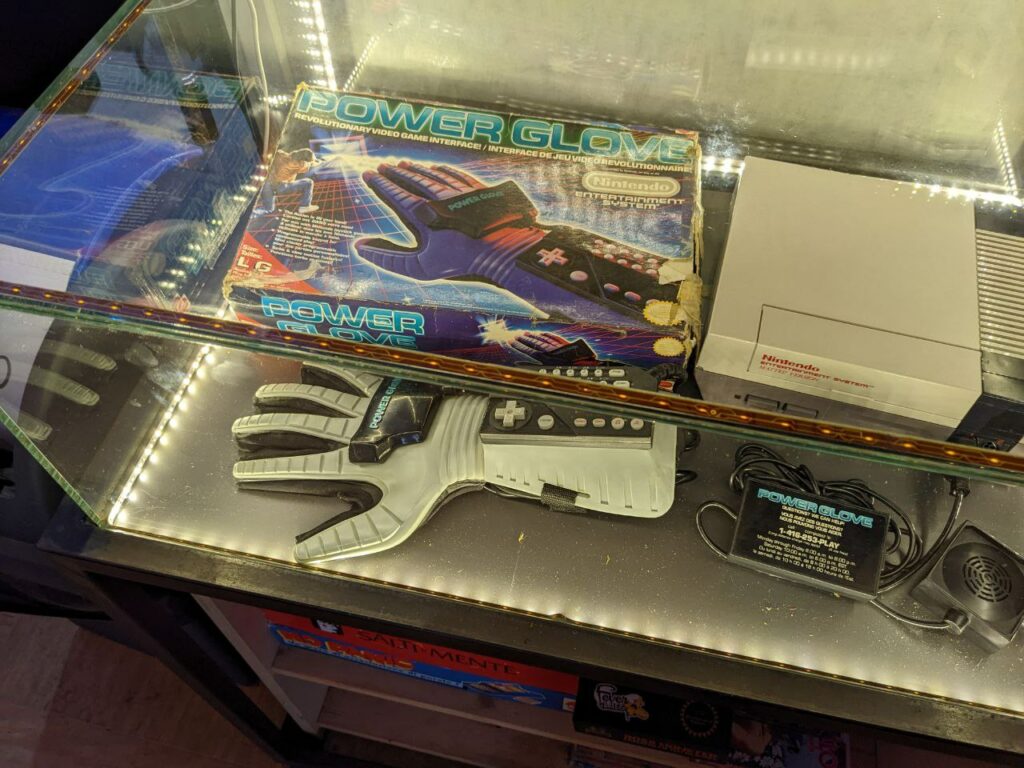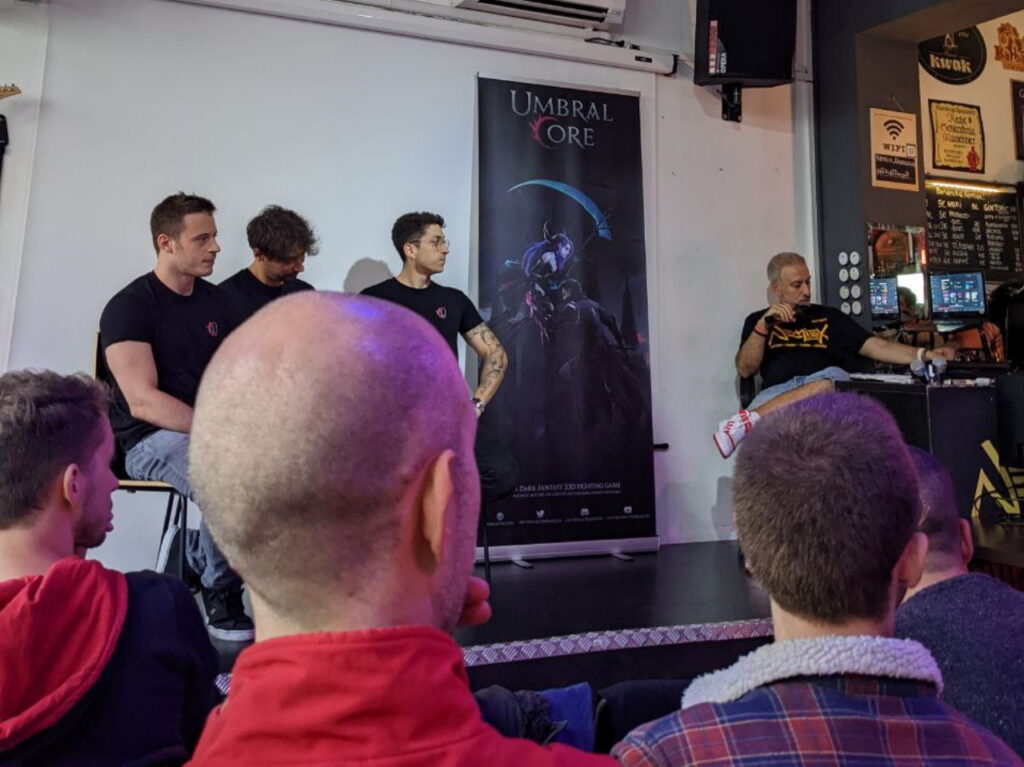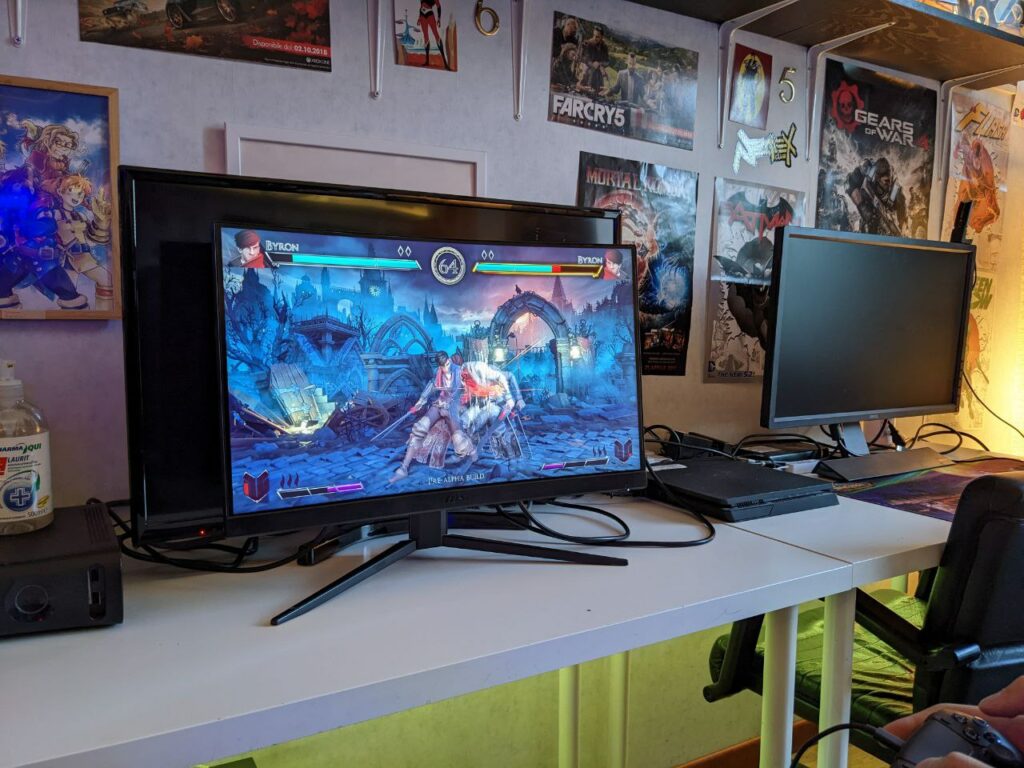Thanks to an unlikely series of coincidences, I have managed to take part in person to the first live event of the upcoming indie fighting game Umbral Core. The event was held at Nemiex Club in Milan on 25.09.2022 and allowed those around the venue to play the first alpha build of the game. I went there, had a chat with the devs, took part in a public Q&A session and—most importantly—I have put my hands on the game. This article summarizes my experience and the developers’ thoughts on what to expect from Umbral Core in the near future.
Serendipity strikes again—with a hammer
This article exists for a series of coincidences that not even a novelist could put together while sober. The highly anticipated 2.5D fighting game Umbral Core, shown at EVO in a special preview trailer, happens to be made by an Italian team. Said Italian team decided to hold a live event in Milan on the 25th September, 2022. And, while living in Germany since 2014, I happened to be in Italy on holiday precisely while the showcase was scheduled. Moreover, I’m Italian myself, so no language barrier—and, guess what? I happened to be in a 2:30 hours radius from the place the game was showcased.
This perfect storm couldn’t go to waste. So, notebook in hand, I took my leave to Milan on a regional train and headed for the venue where the game was going to be showcased—a place called Nemiex Club, located in via Riccardo Pitteri, 8.
A perfect choice of venue
Located at around 20 minutes on foot from the Milano Lambrate train station, Nemiex Club is a small jewel that I wish one could find in more cities. Spread over two floors and three rooms, this venue is chock-full of video game memorabilia, including original retro hardware that is proudly showcased around the top floor, and cabinets full of figurines from movies and games alike.
One of the rooms in the underground floor contains several arcade cabinets, including classic Daytona with the driving seats, but it was closed yesterday to give more focus to the Umbral Core event.

Never in my life I would have expected to see an original Power Glove with my very eyes. Nemiex Club has a marvelous collection of game memorabilia.
Chatting with the devs
The event was structured as a two-parter, with a presentation of the developers/public Q&A first and an inauguration tournament later. Both sections were streamed on Twitch by the Spaghetti Showdown collective (here’s the video-on-demand, with yours truly asking a question at the beginning of the Q&A session with the audience).
I also had a chance to talk with the developers on my own, to ask a couple more questions (special thanks to the development trio for enduring my curiosity). I have summarized both the audience questions and my own questions in the following, aggregating the answers and translating them from Italian to English.
The trio of core developers is comprised of Simone (game designer, competitive fighting game player, marketing analyst), Guido (programmer, machine-learning engineer, casual player, works on wind turbines), and Alessandro (programmer, working in cybersecurity), all aged 27 and fresh out of university. They are known collectively as “A Few Rounds Games“.

The core development trio of “A Few Rounds Games” on the podium. From left to right: Alessandro, Guido, and Simone. On the right, the owner of Nemiex Club, who made this showcase possible.
Q: How was your development studio born?
A: After Alessandro passed his last engineering exam, we met for a beer together and we started talking about resuming old projects. One of those was a fighting game, since Simone is a competitive player and likes the genre a lot. We went for dark fantasy because we realized there is a lack of fighting games exploring this setting. After one more beer (hence the “A Few Rounds” namesake), we decided to go for it and started working on the project—first, as a passion project, then as something bigger. Our core development team is just the three of us, but we are working with a lot more people, from Hawaii to (formerly) South Korea, as we had to outsource all art, animation and music production.
Q: How have you put together your team and how difficult is it to manage it?
A: Soon after beginning, we realized that we are no artists. We can’t draw concept art, we can’t animate 3D models or mesh them. Thus, we had to recruit other people to make our vision true. We are young and fresh out of university, our budget is small—thus, we contacted hundreds of artists, musicians and voice actors around the globe, trying to see if anyone would be interested in joining us. We showed them a very early concept of the game, using placeholders from Mixamo. Only a fraction of them replied, and only an even smaller fraction of them accepted to work with us. We are going for a split payment model—an advance now, the rest paid after our Kickstarter goes live.
Some of our collaborators are only reachable via Discord or social media, so it’s hard to keep in touch at times. Our original animator, for example, was from South Korea, with all the logistical issues this entails (e.g. time zones). When he ghosted us, we had to quickly scramble to find a new one—our summer was very hectic—until we managed to recruit a talented artist from Hawaii to replace them.
After the release of the EVO trailer and its positive reception—also thanks to coverage by Maximilian Dood, Justin Wong and Rooflemonger—we felt pressured to deliver a good product, and we are trying to get over all production delays as soon as reasonably possible, which for us means taking calls in the dead of night to clarify things with our multi-national team.
(Note: the full development timeline is available on their website)
Honored to introduce our first voice actor, David Wayne Callahan!
David will be giving his amazing voice to our main character Byron and to the game announcer! pic.twitter.com/zFihxDbcEq— Umbral Core (@UmbralCore) September 5, 2022
The voice actor for Byron was present at the showcase in the audience too
Q: What were the biggest inspirations in terms of art style and music?
A: The Castlevania series was a huge inspiration for the visuals. For the music, we decided to go for an orchestral feeling instead.
Q: Speaking of other dark fantasy fighting games, what about Omen of Sorrow and Terrordrome: Reign of the Legends? Did you take any inspiration from them?
A: We know both Terrordrome and Omen of Sorrow, but contrary to their grittier, Mortal Kombat-like feeling, we want to go for something more stylish, in the vein of a dark fantasy Darkstalkers.
Q: What is your target budget for making the whole game? What kind of monetization systems are you exploring?
A: We have roughly estimated a total figure of around 600.000€ (equivalent to ~600.000USD), all expenses considered. The budget may still vary, we are currently finalizing it and could be quite different from the preliminary estimate. As for the monetization aspect, the game will be a standard pay-to-play title and won’t follow a freemium/free-to-play model.
Q: What is your target audience?
A: We aim at reaching both casual and competitive players alike. We don’t like the oversimplification fighting games have gone through in the last few years, so we tried to strike a balance. Guido is a very casual player and is our first playtester to be sure the game remains approachable to neophytes, while Simone is the competitive player, who takes care of the core systems being deep enough and enabling player expression.
The game doesn’t have difficult inputs—only quarter circles and dragon punch motions for now—but the complex resource management is the core that allows for a high skill ceiling.
Q: Why is one of your core features “uncapped FPS”?
A: The casual part of our development team asked why fighting games are still locked to 60fps in an age where games are exploring 120/144/uncapped FPSs. Thus, to make a step out of this sort of relatively retrograde feeling, we decided to leave the visuals free from these shackles. Internally, the game still runs at 60fps, thus all frame data refer to this standard. However, visuals are interpolated and their frame rate can be chosen by the player in the settings menu. As for consoles, we are only considering a PlayStation port for the moment, most likely only PlayStation 5. We don’t know yet what the specs will support in terms of graphic fidelity and maximum amount of fps, we will see how it goes when we reach that point.
Q: Speaking of consoles, what about crossplay?
A: It doesn’t really depend on us and will not be available at launch. We will have to see how it goes and what is the revenue cut console makers require for such a feature to be implemented.
Q: What about training mode features and frame data? Will they be a separate DLC like in Tekken 7?
(Note: this was a real question asked by the audience. Yes, Tekken players are still rather angry about it)
A: Training mode will give access to hitbox viewers and frame data from day one. They are both already implemented in the alpha build.
Q: Is there any planned single player content?
A: Of course, since competitive players make only a very small fraction of the overall users. For now, we have planned a classic arcade mode and some fresh take on minigames—you liked Tekken Ball, didn’t you? While we are not really taking that goofy mode back, we have plans to repurpose another old-time classic in an Umbral Core fashion. (Someone in the audience said “Wreck the car”). We are neither confirming nor denying that!
Also, we are planning to add a story mode of sorts, but in a way that doesn’t weigh too much on the economic side. We are not Netherrealm, we can’t afford twenty hours of cinematic cutscenes. We are still in the process of defining what we want to do with it.
Q: Which engine is the game made with? What about netcode?
A: The game was built in Unity, but we basically hollowed it out and used it only as a renderer because of its inherently indeterministic nature. We had to rebuild a lot of tools ourselves. The game implements GGPO and is fully rollback-capable, as this was one “must” for us.
The hands-on impressions on Umbral Core
After the Q&A session, the developers organized a tournament (only for people who signed up through their Discord server) and organized some free-play setups. I managed to play some sets, together with an online acquaintance of mine who joined for the occasion—and whom I finally managed to meet in person for the first time, due to some additional serendipity.
At a ground level, Umbral Core is a traditional air-dasher with heavy emphasis on resource management. The pre-alpha build had just one playable character, Byron, who acts as a semi-shoto.
The game system offers four buttons—Light, Medium, Heavy, Unique. Light, Medium and Heavy can be mashed for an autocombo (which can be toggled on or off in the settings) akin to UNI’s smart steer. If the player has a full EX meter, the autocombo will end automatically in a super, for around 50% damage. There is an additional “Fatal Blow”-style desperation super that can be performed for free once per round, called Doom Impact. In my test, this was also automatically triggered by an autocombo, if not executed manually.
Each palette will come with its own set of VFX that you will be able to freely mix and match!
Also here's a first look at the Doom Impact comeback mechanic.
Doom Impacts can be performed once a round at no cost when the character's health goes below 30%.#fgc #gamedev pic.twitter.com/dnInhCbuMU— Umbral Core (@UmbralCore) September 24, 2022
Special moves are performed by inputting a motion followed by each of the three standard buttons. In a pure Melty Blood fashion, EX special moves are performed with the Heavy button and consume one bar of meter. Grabs are performed with Light + Unique and can be teched with the same input.
There is no dash/air-dash macro, but the buffer is pretty generous (maybe too much – by performing the air dash too close to the ground on a fall, I accidentally performed back-dashes on a side switch quite often).
Umbral Core uses three different meters, each with different filling conditions:
- the normal EX meter, used for EX specials, supers and roman cancels;
- the offense meter, gained by attacking the opponent, which is used for canceling specials into specials;
- the defense meter, gained by correctly blocking the opponent’s attacks, which is used for parries. Parries deal a consistent chunk of damage and have a long active window, but are locked behind said meter.
The offense and defense meter can also be used for activating an install, when full. The install state will gradually deplete the respective bars, and both can be active at the same time. The offense install gives access to unlimited special-to-special cancels, until it lasts. It also increases the damage output by 5% and turns the first hit after the install activation into a counter hit, much like Alex’s V-Skill 1 from Street Fighter V. The defense install gives access to unlimited parries instead.

One of the free-play setups. There were several of them, with different peripherals attached, such as PS5 controllers or fight sticks.
Byron, the one character available, had access to a fireball special, a standard dragon-punch-like reversal, a command dash with several followups (which reminded me a bit of Nightmare’s Grim Stride from Soulcalibur, from an utility standpoint), and a unique charge mechanic. By pressing the Unique button, Byron can stack up to three pips of his special meter, allowing him to have access to an armored rekka that can be used as a combo extender. His Unique button should never be used in neutral, though: Since it requires up to one full second to charge a stack, it’s a literal “please, come here and hit me” kind of move. When canceled into from a special move, though, it charges very fast, allowing one to sacrifice oki to gain stacks. I hope the move will be slightly buffed, because at the moment using it without canceling feels like a suicide and not very intuitive for new players who might approach this game without knowing about it.
The special-to-special cancel outlined above serves Byron well, as he can cancel a fireball into his command dash to get in very fast, allowing him to close distance quite well—which is very good because of his stubby light and medium normals.
Overall, the game feels very responsive. My only slight gripe with it is that it doesn’t seem to allow “late cancels” after a hit lands to make the chain flow. In my on-hands experience, I had to cancel from Light into Medium fairly quickly on hit or block, and I wasn’t allowed to wait for the first few frames of the recovery animation to play out.
Supers deal an impressive amount of damage. The fact that they can be automatically triggered by autocombos make them even more dangerous, because a light hit-confirm with full EX meter can deal close to 50% damage by mashing one button.
These minor gripes aside, this was the first pre-alpha build of Umbral Core in the hands of players, and I am positively impressed by how well it works already. I wish the developers the best of luck in going forward.
Closing thoughts
Umbral Core has all the features a modern fighting game should have and, already in its very early alpha, it is a very solid entry with amazing environment art and overall good presentation. The controls are very responsive and the balance of systems, while overwhelming at first, doesn’t seem too complex to delve into. While I am not 100% convinced the game might be really casual-friendly, it has enough depth to allow for interesting player expression, due to how the three-meters-management works.
If Umbral Core is funded and goes forward, I am pretty confident it might have a relatively good success as a competitive game.
As an aside, I have walked out of Nemiex Club asking myself why there aren’t places as cool as that in my city. I wish I’ll be able to come back there in the future—maybe, presenting my own game, this time?
How to follow the development
The developers have a fairly active Twitter account and a Discord server dedicated to the game. You can also learn more about them on their website. In the meanwhile, you can recover yesterday’s event through Spaghetti Showdown’s own Twitch channel!
WATCH @UmbralCore ACTUAL GAMEPLAY WITH DEVELOPER'S DEMONSTRATIONS AND MATCHES ON THE PLAYABLE PRE-ALPHA BUILD👊
RIGHT NOW ON TWITCH:
🟣 https://t.co/VlQthdoQAj pic.twitter.com/y09ltsbcKi— Spaghetti Showdown (@SpaghettiShowd1) September 25, 2022
Summary
Name: Umbral Core
Developer: A Few Rounds Games (website, Twitter, Discord)
Available on: PC, PS5
Price: TBA
Year of release: TBA
Engine: Unity
Status: pre-alpha
Netcode: Rollback netcode (GGPO)
In one sentence: A dark fantasy 2.5D air-dasher fighting game with gothic aesthetic and emphasis on resource management
Special thanks to Simone, Alessandro and Guido for answering my question, Nemiex Club for hosting the event, Shiburizu for helping me with the questions and one of my internet acquaintances, The Fairy God Bomber, because we have finally managed to meet in real life at this event. Special thanks also to Frey for some terminology correction.
If you are interested in more coverage about indie fighting games, you can find me on Twitter at @AndreaDProjects
Fighting game mysteries
- Fighting Game Mysteries — The Laptop Arcade Player
- Fighting Game Mysteries – D██t███rg█
- Fighting Game Mysteries — Elecbyte

